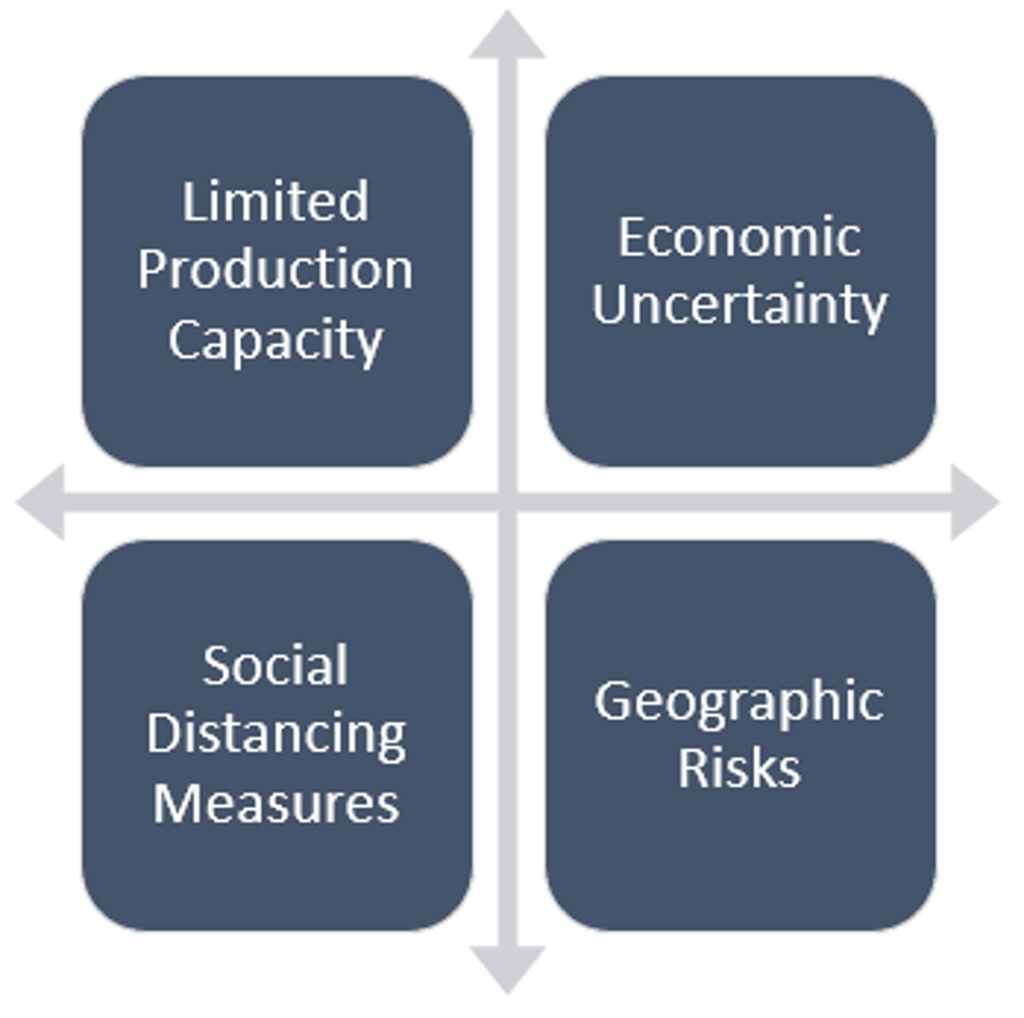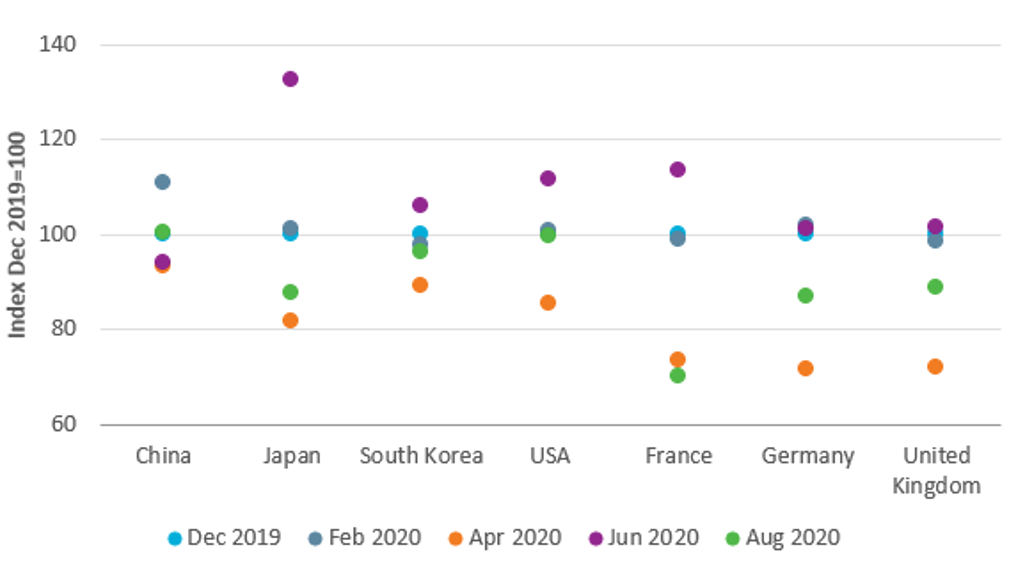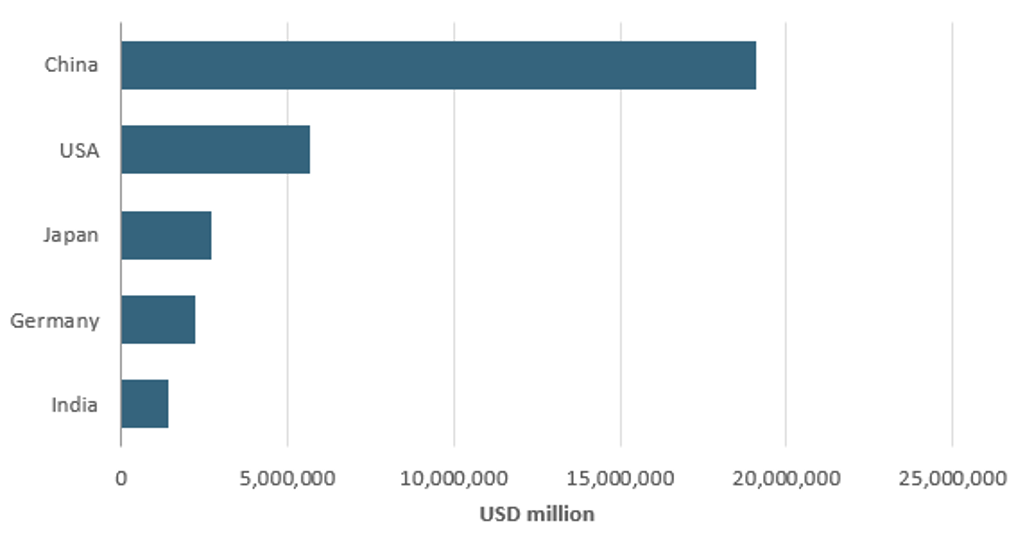Manufacturing businesses around the globe face numerous challenges arising from the Coronavirus pandemic. Disrupted supply chains, social distancing measures, production capacity issues and economic uncertainty are the key challenges that can be tackled by increasing investments in production automation and sales channels.
Risks Affecting Global Manufacturing Industry
Production capacity issues to impact manufacturing operations
Production capacity and supply chain issues are forecast to continue, in turn hindering the performance of manufacturing companies. The global supply chain problems are likely to persist until Q4 2020 as it will require significant capital and time investments from the companies until supply and transportation networks are fully restored. Moreover, monthly industrial production index dynamics in the largest economies also indicate that the manufacturing industry continues to operate below optimal capacity levels, resulting in potential supply issues.
Monthly Industrial Production Index in Selected Countries, Dec 2019-Aug 2020 (Forecast)
Source: Euromonitor International from national statistics, UN, Eurostat, OECD
Economic uncertainty erodes B2B and B2C demand
In addition to supply chain issues, the manufacturing industry is expected to face increased risk from rising global economic uncertainty. This is likely to erode some of the demand for B2B and B2C goods and create additional risks for manufacturing companies. It remains uncertain for how long the global manufacturing sector will feel the effects of COVID-19, although taking, for example, the Great Recession back in 2008-2009 indicates that it might take up to seven years for the manufacturing industry to fully recover. In that instance, US manufacturing output fell by 20% in 2008 and did not fully recover until 2015.
Social distancing measures to constrain faster production growth
Social distancing measures is another issue that continues to hinder the performance of the manufacturing industry. Prevalence of social distancing measures means that not all employees can return to work at once, thus manufacturing companies cannot operate at full capacity and this further delays supply chain recovery. Moreover, companies also face increased healthcare risks, and failure to contain the spread of COVID-19 among employees could result in extended production shutdowns.
High reliance on mega suppliers creates supply risks
The COVID-19 pandemic and associated factory lockdowns also exposed the risk of the manufacturing industry’s overdependence on mega suppliers and underlying geographic risks. For example, in 2019 63% of the world’s total manufacturing output value was concentrated in five countries. This adds additional operating and supply chain risks as industries with smaller geographic diversification may find it difficult to secure alternative suppliers in a short time frame.
Manufacturing Output in Top Five Countries, 2019
Source: Euromonitor International from national statistics
How manufacturing industry can adapt to the “new normal”?
The risks are forecast to persist over the medium and long-term, meaning that manufacturing industries will have to adapt to the “new normal”. New automation tools, supply chain and sales channels diversification can help the companies to better adapt to the new operating environment.
• Investments into production automation. Manufacturing industry is forecast to accelerate investments into digitalisation and production automation tools. Such tools would help the companies to increase operating flexibility and provide more effective tracking of the supply chains. Moreover, automation tools would help to increase productivity without increasing the health risks to the employees.
• Supply chain diversification. Supply chains are set to become more regionalised and over the next 2-3 years manufacturing companies are predicted to accelerate efforts to create regional supply networks and be closer to end consumers. This would help to diversify geographic risks and add more flexibility when dealing with supply chain disruptions. Supply chain diversification is especially relevant for manufacturing of critical goods, such as food products, pharma ingredients, machinery and electronics parts.
• Sales channels diversification. Ongoing economic uncertainty and weaker demand for industrial goods is expected to encourage diversification of sales channels. During the COVID-19 outbreak, many B2B customers switched to online buying and are likely to continue buying online after the lockdown. Manufacturing companies are also expected to invest in e-commerce solutions as it helps to expand the geographic base of potential clients and cope with ongoing travel restrictions.
More information about the "new normal" can be found in the report: "The Coronavirus Era: “The New Normal” - What is here to Stay?"



